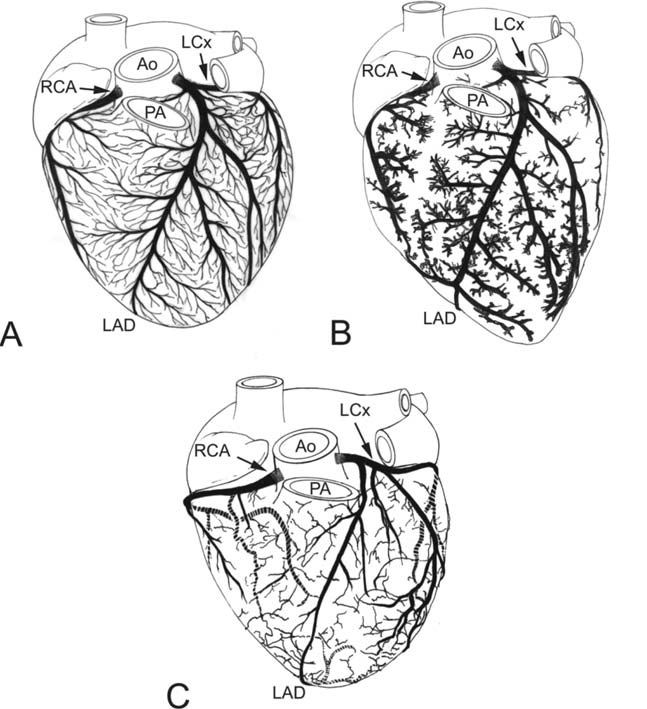|
Two arteries branching off of the aorta, just behind the aortic valve cusps,
provide blood supply to the myocardium of the heart (3). Blood is returned to
the right atrium through the coronary sinus, where the coronary veins drain, and
through the anterior cardiac veins (13, 14). Blood may also be returned to or to
either ventricle or either atria by way of the Thebesian veins (10, 15, 16, 13).
Notable interspecies differences exist in the perfusion area and the extent of
collateralization between coronaries (3). A left azygous vein is also present in
some species that drains the left thoracic cavity directly into the coronary
sinus, bypassing the vena cava (3, 8).
Human
The myocardium of the human heart is primarily supplied by the right coronary
artery and, similar to the porcine heart, exhibits limited collateralization
between arteries (17, 18). Left azygous veins are not present in the human heart (1).
Canine
The myocardium of the canine heart is primarily supplied by branches from the
left coronary artery (11). Unlike human and porcine hearts, canine hearts have
extensive collateralization between coronary arteries located at the epicardial
surface (19-24). A left azygous vein is not present in canine hearts (1).
Ovine
The myocardium of the ovine heart is primarily supplied by branches from the
left coronary artery but shows limited collateralization between coronary
arteries (3, 24).The left azygous vein is present in the ovine heart (1, 3).
Porcine
The myocardium of the porcine heart may either be supplied by branches from the
right coronary artery primarily or receive equal supply from both right and left
coronary arteries. Swine hearts have limited collateralization between arteries
(3, 8). While collateralization between arteries is limited, when it is present,
it is commonly located subendocardially (18, 24). The left azygous vein is
present in the swine heart, returning blood from the body directly to the right
atrium (1, 8).

Drawn diagrams of the coronary arterial circulation in (A) dog, (B) pig and (C) human hearts. While pigs and humans have relatively little collateralization between arteries, dogs have extensive collateralization (1).
|
|


